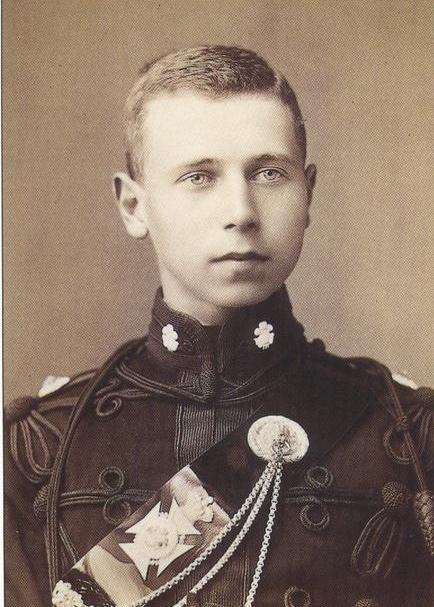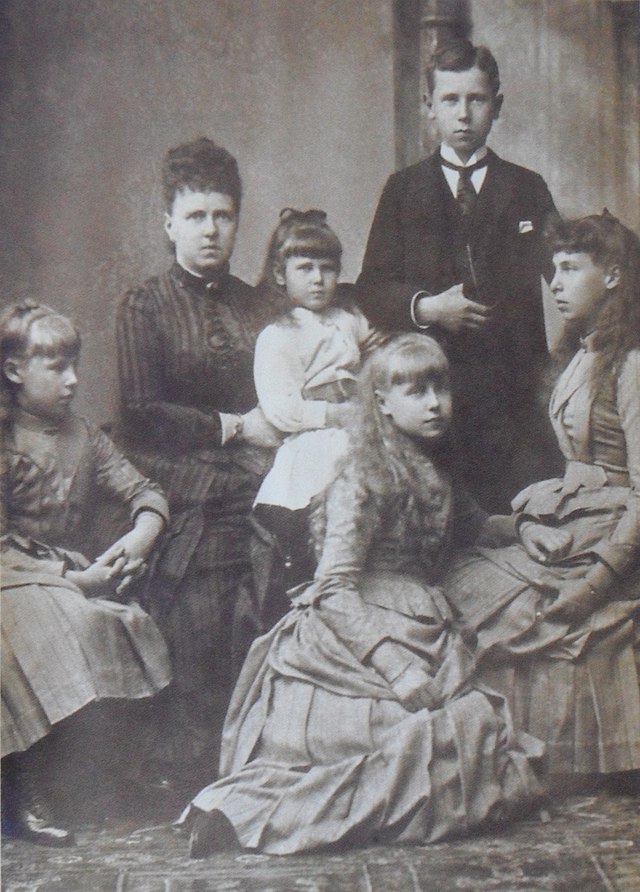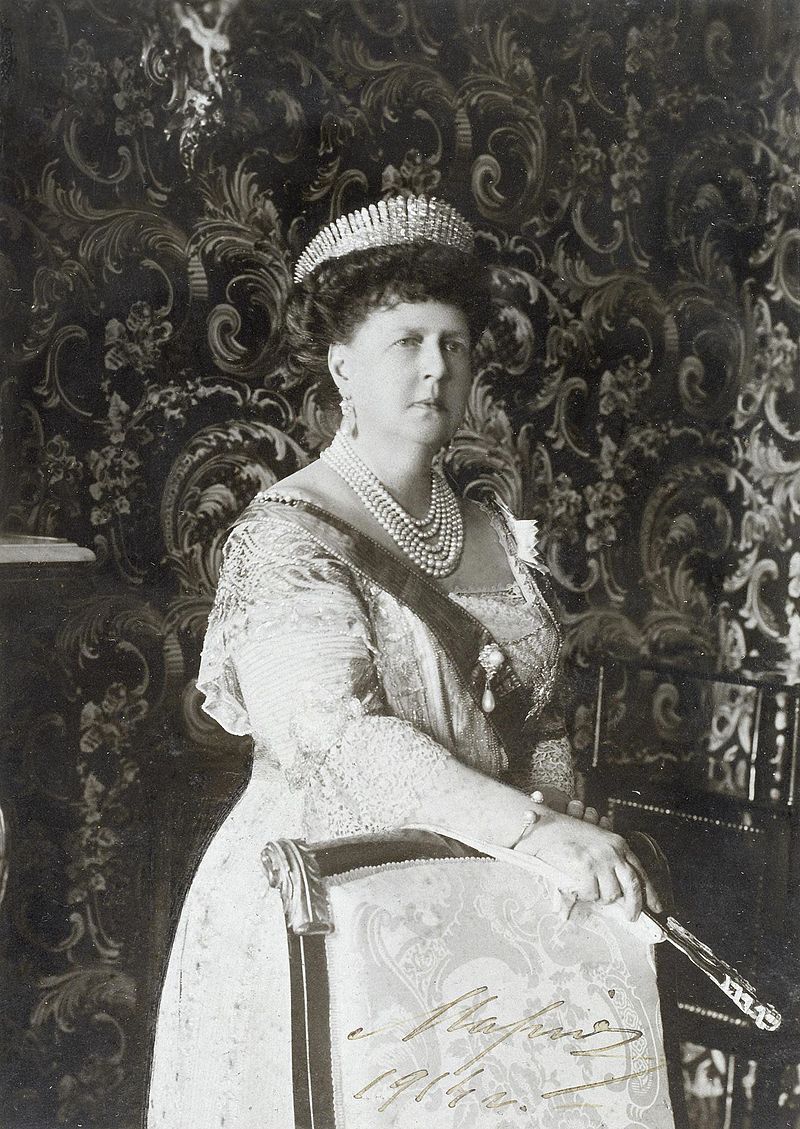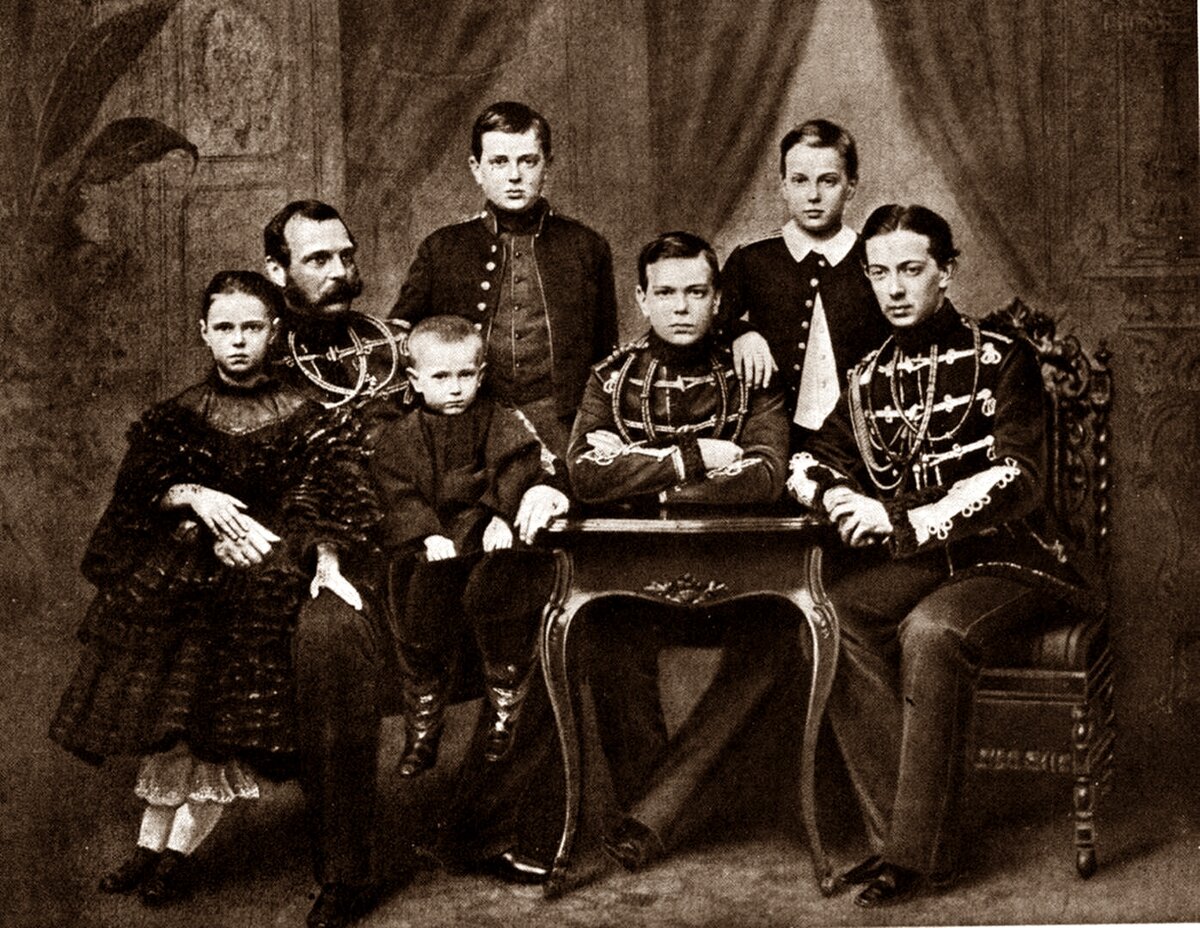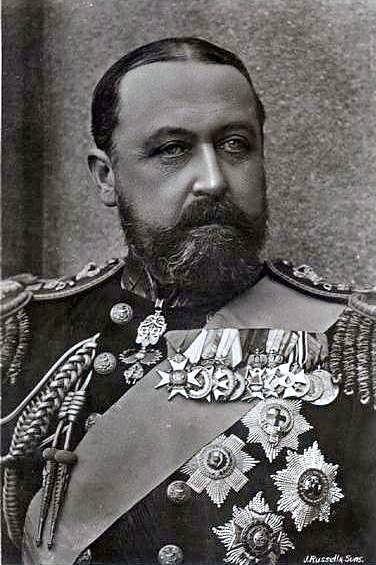by Susan Flantzer © Unofficial Royalty 2015
Saxe-Coburg-Saalfeld/Saxe-Coburg and Gotha: In 1675, Ernst I, Duke of Saxe-Gotha-Altenburg died. Initially, his seven sons collectively governed the Duchy of Saxe-Gotha-Altenburg, as set out in their father’s will. In 1680, the seven brothers concluded a treaty of separation, with each brother getting a portion of the Duchy of Saxe-Gotha Altenburg and becoming a Duke. One of the seven new duchies was the Duchy of Saxe-Saalfeld and Johann Ernst, one of the seven sons of Ernst I, Duke of Saxe-Gotha-Altenburg became the first Duke of Saxe-Saalfeld. When two of his brothers died without male heirs, Johann Ernst took possession of Coburg (in 1699) and Römhild (in 1714). In 1699, Johann Ernst’s title changed to Duke of Saxe-Coburg-Saalfeld.
In 1825, 145 years after the initial split, another line became extinct and there was another split between three surviving duchies. Ernst III, Duke of Saxe-Coburg-Saalfeld became Ernst I, Duke of Saxe-Coburg and Gotha. For more information on the switch, see Saxe-Coburg-Saalfeld/Saxe-Coburg and Gotha Index.
On November 9, 1918, after the German Empire lost World War I, the Workers’ and Soldiers Council of Gotha, deposed the last Duke of Saxe-Coburg and Gotha, Charles Edward, a grandson of Queen Victoria. Five days later, he signed a declaration relinquishing his rights to the throne. The territory that encompassed the Duchy of Saxe-Coburg and Gotha is now in the German states of Bavaria and Thuringia.
********************

Charles Edward, Duke of Saxe-Coburg and Gotha; Credit – Wikipedia
Prince Charles Edward was born at Claremont House near Esher, Surrey, England on July 19, 1884. He was the only son and the second of the two children of Prince Leopold, Duke of Albany, the youngest son of Queen Victoria, and Princess Helena of Waldeck and Pyrmont. Sadly, Charles Edward’s father died three months before he was born. Prince Leopold, who inherited hemophilia from his mother Queen Victoria, died at age 30 from a fall that caused a cerebral hemorrhage. Luckily, Charles Edward was in no danger of inheriting hemophilia. Males have XY chromosomes and females have XX chromosomes. Each parent transmits one chromosome to their offspring. Hemophilia is transmitted on the X chromosome. The hemophiliac male will transmit his Y chromosome to his sons, and therefore the sons will not have hemophilia. However, all daughters of hemophiliac males will be carriers as they all will receive their father’s X chromosome with the hemophilia gene. For more information see Unofficial Royalty: Hemophilia in Queen Victoria’s Family.
His father Prince Leopold had always been drawn to the story of the Stuarts who lost the throne and wanted his son to be named Charles Edward for Charles Edward Stuart, the Young Pretender, also known as Bonnie Prince Charlie. The infant prince was named Leopold Charles Edward George Albert. Formally he was known as Charles Edward and in the family, he was called Charlie. At his birth, Charles Edward inherited his father’s title Duke of Albany.
About two weeks after his birth, Charles Edward became ill and it was thought advisable to baptize him privately at Claremont House on August 4, 1884. Later that year, he was christened publicly on December 4, 1884, at Christ Church in Esher, Surrey, England. His godparents were:
Charles had one older sibling, a sister:
Charles Edward and his sister Alice were first educated at home by their governess Miss Jane Potts. After Charles Edward got to be “too much for Miss Potts,” as his sister says in her memoir For My Grandchildren, he was sent as a day student to Sanroyd School, then to prep school at Lyndhurst and Eton College. Charles Edward remained at Eton College until an event occurred that would change his life drastically.
Queen Victoria’s husband, Prince Albert of Saxe-Coburg and Gotha, was the second of the two sons of Ernst I, Duke of Saxe-Coburg and Gotha. Albert’s elder brother succeeded their father as Ernst II, Duke of Saxe-Coburg and Gotha. Ernst II had married Princess Alexandrine of Baden, but when it became increasingly clear that the marriage would produce no children, a plan for the succession needed to be devised. A union between the United Kingdom and the Duchy of Saxe-Coburg and Gotha was undesirable. For most of Ernst II’s reign, his brother Albert was the heir presumptive. When Albert died in 1861, his second son Alfred became the heir presumptive after his older brother, the Prince of Wales (later Edward VII of the United Kingdom), renounced his succession rights.
Alfred married and had one son and four daughters, and his son Alfred (known as Young Affie) became the next in the line of succession. In 1893, Ernst II died and Alfred became Duke of Saxe-Coburg and Gotha and his son Young Affie became Hereditary Prince of Saxe-Coburg and Gotha. Young Affie was involved in a scandal with his mistress and shot himself during his parents’ 25th wedding anniversary celebrations. His parents sent him off to a spa to recover, but Young Affie died two weeks later on February 6, 1899. Prince Albert’s third son, Prince Arthur, Duke of Connaught, had renounced the Saxe-Coburg and Gotha succession for himself and his only son Prince Arthur of Connaught. That left only Charles Edward. It is rumored that Prince Arthur of Connaught, who was attending Eton with Charles Edward, threatened to beat up his cousin if he did not accept the duchy.
In 1899, 15-year-old Charles Edward left Eton to continue his education in Germany. Various relatives argued about where Charles Edward should attend school. Finally, Cousin Willy, Wilhelm II, German Emperor and King of Prussia, arranged for Charles Edward to attend Leichterfelde Military Cadet Academy, the German equivalent of the Royal Military Academy Sandhurst. The Duchess of Albany and her daughter Alice stayed for a prolonged time in Germany to ease Charles Edward’s adjustment, but the adjustment did not last long. Alfred, Duke of Saxe-Coburg and Gotha died of throat cancer on July 30, 1900, and 16-year-old Charles Edward became Duke of Saxe-Coburg and Gotha. After becoming Duke, Charles Edward continued his education at the University of Bonn where he studied law and political science. Until Charles Edward reached his 21st birthday, Hereditary Prince Ernst of Hohenlohe-Langenburg, the husband of Alfred’s daughter Alexandra, served as the Regent of the Duchy of Saxe-Coburg and Gotha.
On February 15, 1905, at a court ball at the Berliner Stadtschloss, the engagement of Charles Edward and Princess Viktoria Adelheid of Schleswig-Holstein-Sonderburg-Glücksburg was announced. Viktoria Adelheid, who was called Dick in the family, was the niece of Empress Augusta Victoria, wife of Charles Edward’s first cousin Wilhelm II, German Emperor, and Wilhelm is said to have selected the bride. She was the eldest daughter of Friedrich Ferdinand, Duke of Schleswig-Holstein and Princess Karoline Mathilde of Schleswig-Holstein-Sonderburg-Augustenburg. The wedding was held on October 11, 1905, at Glücksburg Castle.

Charles Edward and Viktoria Adelheid in 1905; Credit – Wikipedia
The couple had five children:
- Johann Leopold, Hereditary Prince of Saxe-Coburg and Gotha (1906 – 1972), married 1) Feodora, Baroness von der Horst, divorced 1962, had issue, unequal marriage, causing Johann Leopold to renounce his rights to the headship of the House of Saxe-Coburg and Gotha; married 2) Maria Theresa Reindl; no issue
- Princess Sibylla of Saxe-Coburg and Gotha (1908 – 1972), married Prince Gustav Adolf of Sweden, Duke of Västerbotten, had childrenincluding King Carl XVI Gustaf of Sweden
- Prince Hubertus of Saxe-Coburg and Gotha (1909 – 1943), unmarried, died in action during World War II
- Princess Caroline Mathilde of Saxe-Coburg and Gotha (1912 – 1983), married 1) Friedrich Wolfgang Otto, Count of Castell-Rüdenhausen, divorced 1938, had issue; married 2) Captain Max Schnirring, he died 1944, had issue; married 3) Karl Otto Andree, divorced 1949, no issue
- Prince Friedrich Josias of Saxe-Coburg and Gotha (1918 – 1998), married 1) Countess Viktoria-Luise of Solms-Baruth, divorced 1947, had issue, Head of the House of Saxe-Coburg and Gotha descends from this marriage; married 2) Denyse Henrietta de Muralt, divorced 1964, had issue; married 3) Katherine Bremme, no issue
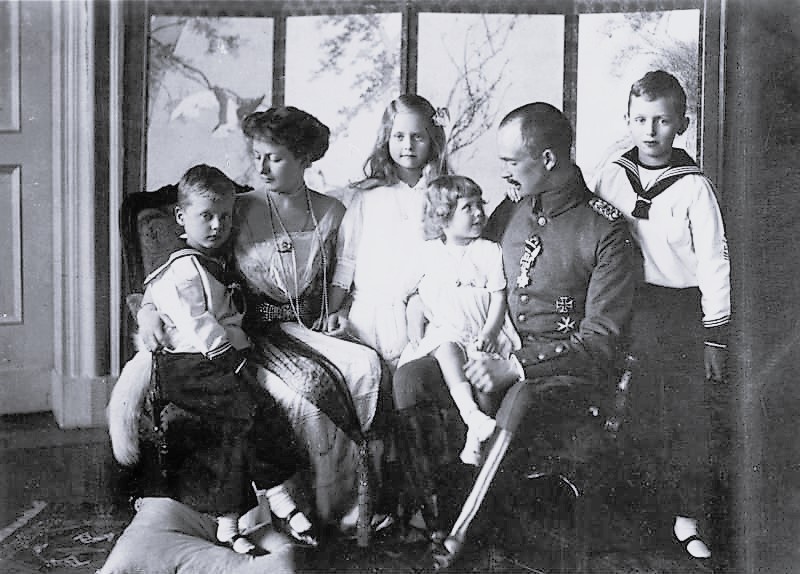
Charles Edward and his family in 1918; Credit – Wikipedia
Charles Edward showed a great interest in cars and early aviation. In 1910 in Gotha, he built an airplane landing site with a hangar and a flying school. In 1913, he was involved in transforming the Gotha Coach Factory into an airplane manufacturer.
During World War I, Charles Edward was a General on the staff of the General Command of the 3rd Army of the German Empire. Before 1867, the Duchy of Saxe-Coburg and Gotha had its own army, but in 1867 a treaty was signed with Prussia, and the Duchy’s army was added to the 6th Thuringian Infantry Regiment No. 95 of the 22nd Division of the Army Corps. Charles Edward considered the 6th Thuringian Infantry Regiment No. 95 his army and accompanied the regiment to the front. He visited the regiment often and spent more than one-third of World War I with the regiment. In December 1914, Charles Edward was promoted to General of Infantry. Although he held the rank of General, Charles Edward had no active command during World War I. To demonstrate his unconditional loyalty to the German Empire, Carl Edward signed a law on March 12, 1917, that said non-German members of the House of Saxe-Coburg and Gotha could not be in the line of succession and succeed to the throne if their home country was at war with the German Empire. An attack on London on June 17, 1917, by seventeen twin-engine bombers built at Charles Edward’s Gotha Coach Factory cost 160 lives and increased the anti-German sentiment in the United Kingdom.

Charles Edward visiting the troops in 1914; Credit – Wikipedia
Charles Edward had been invested as a Knight of the Garter in 1902, but he was struck off the roll of the Order of the Garter in 1915 by his first cousin King George V of the United Kingdom along with six other Austrian or German royals. Further action was taken against him after the British Parliament passed the 1917 Titles Deprivation Act which allowed the Privy Council to investigate “any persons enjoying any dignity or title as a peer or British prince who have, during the present war, borne arms against His Majesty or His Allies, or who have adhered to His Majesty’s enemies.” Under the terms of that act, an Order in Council on March 28, 1919, formally removed Charles Edward’s British peerages, the Duke of Albany, Earl of Clarence, and the Baron of Arklow. Charles Edward and his children also lost their titles of Prince and Princess of the United Kingdom and the styles Royal Highness and Highness. Along with Charles Edward, three others, Ernst August, Duke of Cumberland and Teviotdale, Earl of Armagh; Ernst August (Duke of Brunswick), Prince of Great Britain and Ireland; and Henry, Viscount Taaffe of Corren and Baron of Ballymote, lost their titles. According to the Titles Deprivation Act, the male heirs of these four people have the right to petition for restoration of their titles but no heir has ever done so.
On November 9, 1918, the Workers and Soldiers Council of Gotha deposed Charles Edward as Duke of Saxe-Coburg and Gotha. Five days later, he signed a declaration relinquishing his rights to the throne. Saxe-Coburg and Gotha broke into two republics, Coburg and Gotha. In 1920, Gotha joined the newly created state of Thuringia, while Coburg joined the Free State of Bavaria. After losing his throne, being branded as a traitor by his birth country, and fearing the threat of Communism, Charles Edward searched for something new. He became associated with various right-wing paramilitary and political organizations. In 1932, he took part in the creation of the Harzburg Front, through which the German National People’s Party became associated with the Nazi Party.
Charles Edward first met Adolf Hitler on October 14, 1922, when he welcomed Hitler as a guest of honor at a festival in Coburg. In the following decades, Charles Edward met Hitler personally at least 21 times. After the first electoral success of the Nazi Party in Coburg in 1929, Charles Edward openly supported the Nazi Party. On March 23, 1932, in the Coburg National newspaper, Charles Edward supported Hitler in the presidential election against the incumbent Paul von Hindenburg. After the Nazi Party won the general election in 1933, the Nazi swastika flag was flown over the Veste Coburg, the home of Charles Edward.
As a result of his support of the Nazi Party, Charles Edward was appointed to several positions and represented the Nazi Party in Germany and abroad. He became a member of the Sturmabteilung (SA or Brownshirts), the paramilitary wing of the Nazi Party, and rose to the rank of Obergruppenführer. He served as president of the German Red Cross from 1933 to 1945, and the German Red Cross became a part of the Nazi Party and was no longer affiliated with the neutral International Red Cross. In December of 1935, Charles Edward was elected President of the German-English Society, whose goal was to explore a possible pact between the two countries. In January 1936, Charles Edward returned to his home country when he represented Adolf Hitler at the funeral of King George V. After King Edward VIII abdicated the British throne and married Wallis Simpson, it was Charles Edward who hosted their unauthorized trip to Germany in 1937. Charles Edward was too old for active service during World War II, but three of his sons served in the German armed forces, and his son Hubertus was killed in action in 1943.

Charles Edward giving a speech as President of the German Red Cross in 1936; Credit – Wikipedia
After the end of World War II, Charles Edward was placed under house arrest on June 4, 1945, at his residence, the Veste Coburg, because of his Nazi sympathies. Charles Edward and his wife were housed in a stable cottage on the grounds of the Veste Coburg. His sister Alice and her husband came to Coburg to plead for his release but were unsuccessful. However, they were able to negotiate for an improvement in Charles Edward’s living conditions. Charles Edward and his wife moved into a part of one of their own houses, close to the market where it was easier for them to do shopping. Several times Charles Edward faced trial for his alleged Nazi activities. In 1949, a denazification appeals court classified Charles Edward as a Nazi Follower, Category IV. He was heavily fined and almost bankrupted.
After World War II, some of the Saxe-Coburg and Gotha properties that were now in East Germany were seized. The family was left with Schloss Callenberg in Coburg, Bavaria, Germany and Schloss Greinburg an der Donau in Grein, Austria. Charles Edward spent the last years of his life in seclusion. He died of cancer on March 6, 1954, at the age of 69 in his apartment on Elsässer Straße (Street) in Coburg, Bavaria, Germany, and was buried in the Waldfriedhof (Forest Cemetery) at Schloss Callenberg. His wife Viktoria Adelheid died on October 3, 1970, and was buried beside her husband.

The cemetery at Schloss Callenberg; Credit – Wikipedia
This article is the intellectual property of Unofficial Royalty and is NOT TO BE COPIED, EDITED, OR POSTED IN ANY FORM ON ANOTHER WEBSITE under any circumstances. It is permissible to use a link that directs to Unofficial Royalty.
Saxe-Coburg-Saalfeld/Saxe-Coburg and Gotha Resources at Unofficial Royalty
